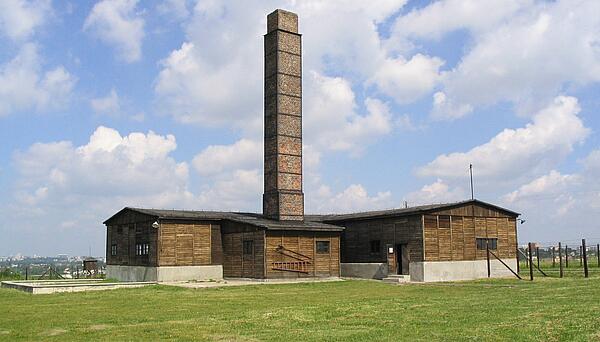Majdanek
Majdanek was a concentration and extermination camp situated just outside the Polish city Lublin. During Operation Reinhard the camp was used to kill Jews on a mass scale. Unlike most other camps, Majdanek was built within the outskirts of a city, meaning that from the outside it was clearly visible. Majdanek is the best preserved of the concentration camps as the SS did not have time to demolish it before the rapid advance of the Soviet Army.
Due to the fact that it was not covered by any trees, it was easy to see what was happening at the Majdanek camp while it was in operation, which was unusual because typically the Nazi’s would build their camps in places away from cities and obscured by woodland or hills. What was also strange about Majdanek was that it had no security - the Nazis did nothing to try and hide the camp or protect what they were doing there.

Majdanek earned its name from the suburb of Lublin called Majdan Tatarski, which had a high population of Jews before the war. It became a ghetto after the German invasion of Poland in September 1939. As well as Jews, the camp also contained Poles who were identified as partisans and Soviet prisoners of war.
The decision to turn the concentration camp at Majdanek into an extermination camp came shortly after the Wannsee Conference in April 1942. As part of the ‘Final Solution’, the Nazis planned to annihilate all of the Jews living in Poland. Unlike most of the death camps, Majdanek did not have a major railway line nearby, so instead trucks were used to transport the prisoners from the rail station at Lublin.
Karl Otto Koch was the first commandment at Majdanek - he was later killed by the Nazis after he was found to be stealing goods from the death camp that were meant to be sent on to Berlin, which is the same fate suffered by Hermann Florstedt, the third commandment. Meanwhile, after the war, three of the other commandants of the death camp – Liebehenschel, Weiss and Koegel - were executed for their crimes.
On 23 July 1944 the Majdanek camp was liberated by the Russians, making it the first camp to be liberated.
As ever, it is difficult to ascertain exactly how many people entered and died in the death camp, usually because records were destroyed when the Nazis realised the Russian army was coming. As a result claims vary wildly from just 42,000 up to as many as 1.5 million, which was the original Russian tally. The most recent estimate puts the death toll at around 80,000 - 60,000 of which were Jews.
Another thing that has made the Majdanek concentration camp of great interest to historians is its conditions; because they ran out of time, the SS officers did not destroy the camp leaving the gas chambers, among other things, almost intact.
MLA Citation/Reference
"Majdanek". HistoryLearning.com. 2024. Web.
